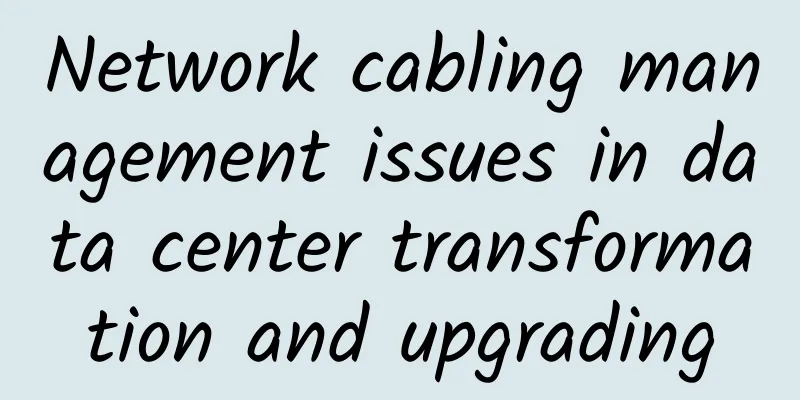Network cabling management issues in data center transformation and upgrading

|
Cabling is an important part of the internal network of the data center. Managers not only need to know where each cable goes, but also need to be able to find the specific cabling when equipment is reconfigured or changed. They must be able to obtain specific information about each cable in seconds, including the type and supplier of the cable, terminal connection points, cable duct location, and installation date.
The main purpose of doing this is to facilitate later maintenance and upgrade operations. Even so, when it comes to data center improvements, budgets and plans face challenges. So how to avoid network cabling damage during data center transformation and upgrades, even during normal operations? This question needs to be looked at from multiple perspectives. Before any kind of transformation or equipment upgrade, data center contractors must understand the cabling layout, which involves network, energy and other infrastructure cabling. Provide contractors with clear and accurate cabling documentation that clearly describes your data center situation and previews the existing cabling layout before starting. For basic network cabling management, ensure cables are kept off the ground to avoid being stepped on, away from chilled water pipes, and away from major electromagnetic sources such as chiller compressors, as well as away from heat sources to avoid fire hazards. Local building and electrical codes will provide additional guidelines for routing and connecting cables. If the planned renovation or upgrade will compromise cabling, for example, if the cable is going to be run through a wall, then a redesign will be necessary to prevent the cable from being damaged. This is usually a small project, but consider running the new cable in protected conduit to support faster Ethernet speeds and clearly labeling it for future reference. As technology continues to develop, network cable management has been further improved, in part due to data center renovation projects. For example, data centers can have decentralized cables and pipes under raised floors. During renovations, people can put network cables in protected conduits, place them on the ceiling, and then use vertical conduits to connect to individual racks. This can prevent cable damage caused by water leakage under the floor, and at the same time, it is easier to manage later. |
<<: Talking about new IP technology in data centers
>>: The significance of SDN deployment in developing countries
Recommend
Riverbed helps Baker Donelson gain deeper insights into actual end-user experience
Digital transformation has been fully launched in...
Sent a data packet to xxxhub and found...
[[442879]] Hello everyone, I am Xuanyuan. That da...
VMISS 30% off: Los Angeles/Japan/Hong Kong VPS monthly payment starts from 3.5 Canadian dollars (≈ RMB 18 yuan)
VMISS is a new merchant founded in Canada. It cur...
Countries around the world are competing to develop 5G network DSS technology, causing controversy
After the 5G standards were frozen, the global in...
What is the difference between a wireless access point and a wireless router?
[[183847]] There is a distinct difference between...
Server-Speaks-First is a bit of a bummer, protocol detection and opaque ports in Linkerd 2.10
[[416375]] This article is reprinted from the WeC...
Operators won’t tell you that you can use the 5G network without a 5G package
According to data disclosed by the Ministry of In...
SpartanHost: Seattle high-defense KVM 20% off, starting at $4 per month, 1G memory, 15GB NVMe hard drive, 2TB/10Gbps bandwidth
SpartanHost, also known as Spartan, is a foreign ...
PacketVM: Netherlands VPS with large hard disk starts at $2.5 per month, Dallas VPS starts at $2.5 per month
PacketVM is a company registered in the UK (numbe...
What is the value of 5G at the edge?
A lot of people have been questioning the value o...
6 places that provide free certificates to upgrade your website to HTTPS for free
As websites such as Google, Taobao, and Baidu hav...
TNAHosting: 12GB RAM and large hard disk OpenVZ monthly payment starts at $5, KVM annual payment starts at $15
TNAHosting is a foreign hosting company establish...
Distinguish between fat AP and thin AP, full WiFi signal coverage will be easy
Wireless AP is an access point for users who use ...
Using 5G may require changing SIM cards, causing controversy: Industry chain insiders say it is mainly for vertical industries
You can activate 5G services without changing you...
New optical spiral technology can increase information transmission rate tenfold
A new optical-based communications tool can trans...









